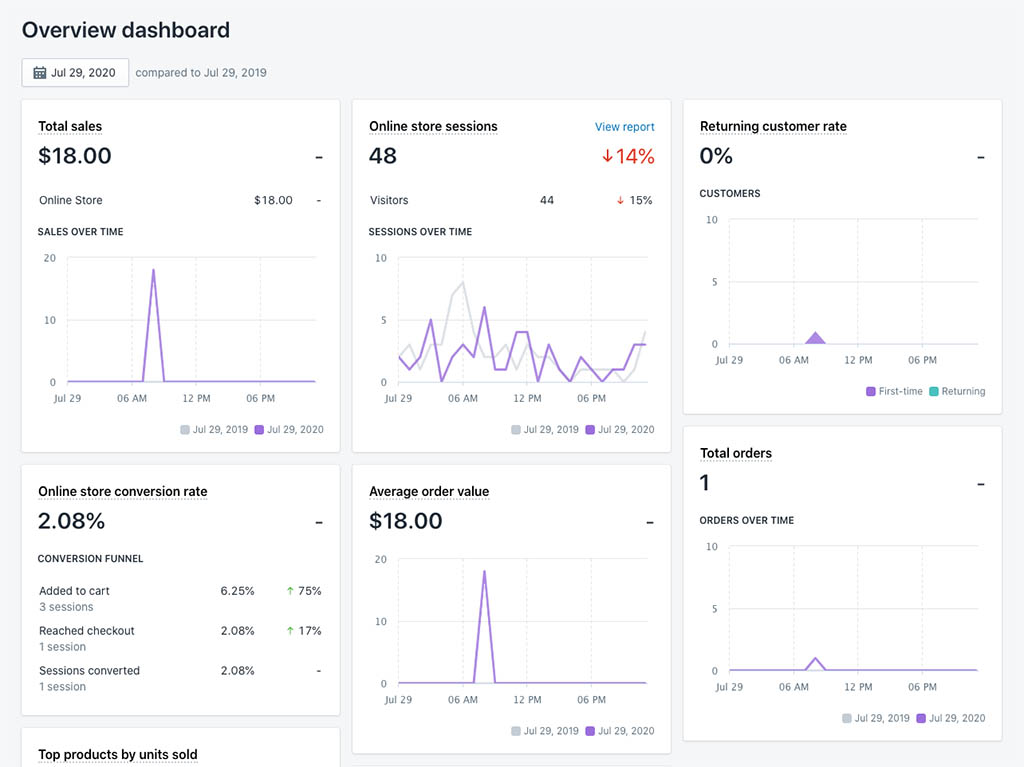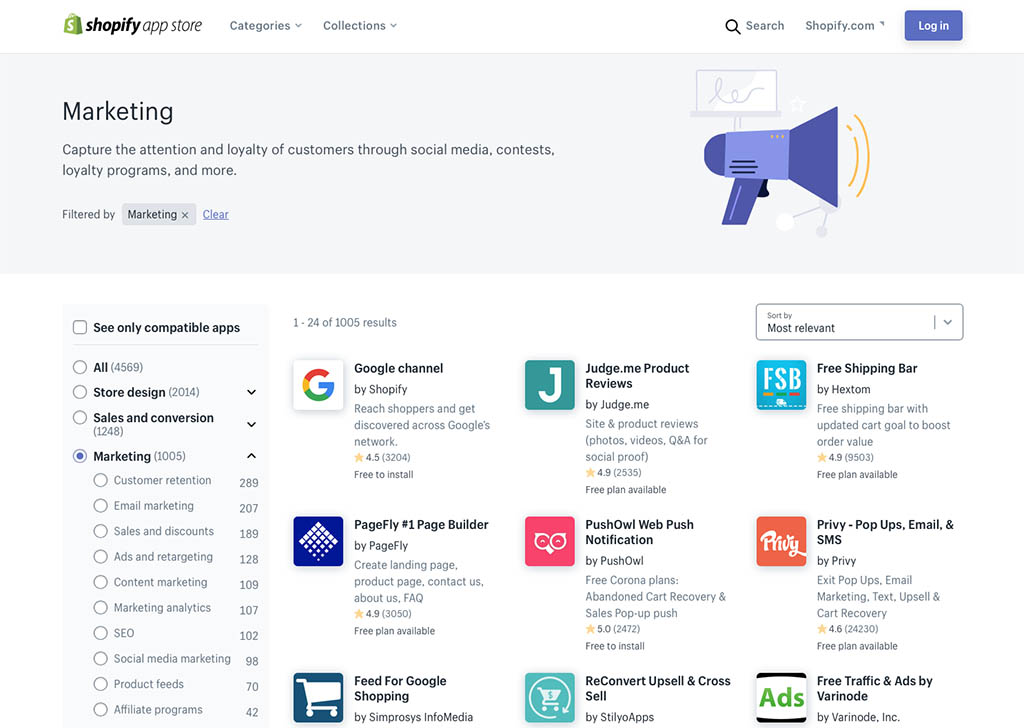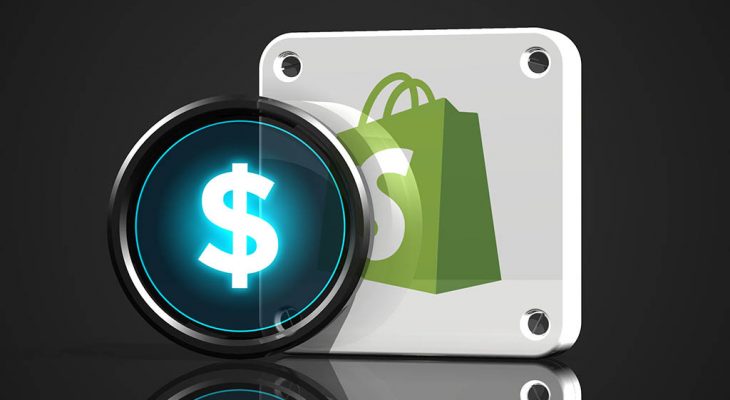I never really thought it would come to this, but I’m starting to feel like a bit of a Shopify expert. I’ve been making well over $1000 a month selling digital products on Shopify for several years now, and my mind has been bursting with ideas on how I’m going to build additional stores over the next year or two.
It’s an incredibly easy platform from which to build a profitable business from, and I’m confident that nearly anybody can make money doing this. To prove it, I’m going to teach you how to make money on Shopify. As you’ll see, it’s a lot easier than you think…
For those of you who are wondering about my credentials, do be sure to read about my own $1000/mo success story with Shopify. I have one store at the moment (which I opened in 2015), and I’m exclusively selling digital products that I create.
That store is currently generating over $1000 a month in completely passive income, and it is easily been one of my most successful online business ventures ever.
How to make money on Shopify: a simple 2-step process
I had no idea what I was doing when I first created my Shopify store. Best of all, I didn’t worry too much about it. I just had an idea, executed on it, and figured that things would work out on their own. And you know what? They did,
Thinking back on it, taking a causal approach and not stressing about whether or not I was doing things perfectly was the best way I could have done it. Long story short, I found success by doing two simple things:
- Creating a great product
- Driving a bit of traffic to the store
I’ll do a deep-dive explanation of two of these steps in a moment, but first I think it’s probably worth looking at all the benefits that a Shopify store offers. Note that all of the following features are included with the basic plan:
| Everything you get with Shopify | |
|---|---|
| Sell digital products (PDFs, videos, images, courses, audio files, etc) |  |
| Sell physical products |  |
| Unlimited products |  |
| Unlimited discount codes |  |
| Accept credit card payments (with fraud protection too!) |  |
| Full analytics and performance reports to help you understand what's working (so that you can increase sales) |  |
| Pricing | $29/mo |
Now that we have a better understanding of what you’ll get with a Shopify store (even the basic plan), let’s take a closer look at my 2-step process for profitability:
1. You must have a product that will sell
The reason why I’m so successful is because I’m selling a product that solves people’s problems. These are digital products which saves my customers hours of work, and the conversion rate is relatively high. FYI, I use the Digital Downloads app (built by Shopify) to sell digital products on the platform, and it works wonderfully.
Anyway, because they solve problems, my products sell themselves. My customers see the product, and with the help of the description that I use to describe it on the product page, it’s clear that it’s a good value. Shopify makes the transaction quick and easy.
How I came up with my product idea
To be honest, I spent years experimenting with different kinds of digital products to build an online business around. I discovered this particular product back in 2012, in the beginning, I had no intention of selling it.
I simply created it for fun, posted it to my blog as a freebie, and the response from my readers was overwhelmingly positive.
Once I realize that I was onto something good, I refined the product even further and built my Shopify store as a platform to sell it on.
Tips for those of you who need a little help coming up with ideas for products to sell on Shopify:
As someone who’s been doing business online since 2006, I understand how difficult it is to come up with successful product ideas. Most of the time, it’s going to happen by total accident.
You just have to try lots of different things and then pour gas on the fire of the one thing that works. In my case, pouring gas on the fire that my digital product created was a very successful endeavor. Here are two important tips:
- Your product must have low costs associated with it. Not only in regards to how much it costs to acquire and or make (which I’ll get to in a moment), but in other areas such as shipping and warehousing. For example, you may run into trouble really quick If you sell large items that you have to buy in bulk from a manufacturer. Do you have a place to store that stuff? And what about the exorbitant shipping costs? How are you gonna handle that?
- More importantly, your product has to be something you can get / make easily. I have an advantage since I sell digital products that I create. The only bottleneck in the process is me. However, I do know a lot of Shopify store owners who weren’t able to get products from China once the COVID-19 thing started in early 2020. Their business was essentially dead until the factories and shipping companies opened back up again.
2. You need traffic to be successful – but not as much as you think
If you’ve been doing any research at all about how to build a successful e-commerce business, you’ve probably heard a lot of talk about the importance of building massive traffic. After all, it only seems logical that you’ll have a higher chance of success the more people visit your site right?
Not necessarily. Believe it or not, my Shopify store averages around 40 to 50 visitors per day. That’s it. And it generates over $1000 a month consistently year over year with very little effort on my part. It’s truly passive income at its finest.

How I drive traffic to my store
Even though I just spent a good amount of time telling you that you don’t need a ton of traffic to be successful, driving targeted traffic to my store is essentially how I make money on Shopify.
A lot of gurus will tell you that you’ll need to use Facebook ads or Google AdWords to have any chance at success. Quite frankly, that’s a load of bull. I’ve never had any luck with Facebook ads or AdWords even with a digital product that sells so well already. I guess that means I’m just a lousy salesman, but it doesn’t matter to me. The less money I have to spend on ads the better.
Anyway, I’ve had lots of success sending traffic to my store with the following 5 platforms:
- A blog
- A YouTube channel
- Social media
- Facebook groups / pages
- An email list
Any one of these platforms will work if you have enough patience and persistence. Let’s take a look at each one of these one by one, and I’ll tell you how it works for me:
My blog
For the record, my blog came 5 years before my Shopify store. It was only after that I realized I had stumbled across a good digital product idea that I created a Shopify account and linked it directly to my blog. To this day, my blog is still my number one source of traffic to my Shopify marketplace.
Although it’ll take some time to build up traffic this way, I still highly recommend having a blog of your own (independent of Shopify). The key to making it work is to write blog posts around in-demand topics (which you can find using a good SEO tool such as SEMrush).
I’ll do a complete deep dive tutorial on that process soon.
My YouTube channel
The YouTube channel I built to showcase the products I have on my store is incredibly small and it gets hardly any views, but you know what? It works.
If you want learn how to make money on Shopify, you need to learn how to make good videos to talk about your products. Once you master that, it’s a gold mine of traffic. I know this because I’m driving a handful of highly-converting traffic from my YouTube channel to my store every day from what I consider to be mediocre videos (at best). I know I can do better, and it will only benefit me in the long run to improves. It’s one of my biggest goals for the coming year.
Social media
For anyone that knows me personally, you’ll know how much I loathe social media. I have a feeling that there are a lot of people out there who agree with me on this.
I prefer to be a behind-the-scenes content creator rather than being online socializing all day. However, I do realize that being active on social media and talking about my products every now and then is important. Honestly, I don’t drive very much traffic to my store via social media.
That being said, if spending your entire day on Instagram or Facebook is your thing, this might be the perfect traffic source for you.
Facebook groups and pages
Speaking of Facebook, there are tons of opportunities to the active in your niche and promote your products in Facebook groups. Note that your primary goal for joining a Facebook group (to promote your Shopify store) is to be as helpful as possible.
You’ll likely be banned by the group owner if all you’re doing is promoting your own products, so make sure to engage in the discussions and offer assistance whenever possible. Only promote your products with relevant to the conversation.
Email lists
For many people learning how to make money on Shopify, it’s the email list that drives the highest source of sales. Basically, you want to collect email addresses of all your potential customers, and then email them occasionally with promotions and special deals on your products. For the record, I’m using ConvertKit to do that.
I’m going to do a full deep-dive tutorial on the process of collecting email addresses for email marketing purposes, so do stay tuned for that. But for now, all you need to know is that your email list may very well be your most valuable asset – even more than the store itself.
Pro tip: spend most of your time promoting your store
As much as I hate to admit it (because I’m a total introvert) you’ll have more success the more time you spend promote your products. Some experts say that you should be spending 20% of your time creating your products, and the other 80% of your time promoting them.
I’m not sure if I totally agree with that, because I’m having decent success now with some thing like 5% of my time going towards promotional efforts. Yes, I could probably be making a lot more money by increasing the time that I’m spending on marketing, but I’m not sure I would be very happy doing that.
I’m not quite making enough money yet to be able to hire out someone to do my marketing for me. I’ll get there eventually, but I still got a way to go yet.
Even though I dread the marketing aspect of Shopify, I have come to the conclusion that it doesn’t necessarily have to be hard and boring.
Check out the Shopify App Store to see all the great marketing tools available for Shopify store owners. There’s tons of helpful apps in there for things like connecting your store to your social media channels and managing your email marketing.

Personally, I’m having a lot of fun showing examples of how people can potentially use my digital product. I post these examples to my blog and YouTube channel, and they seem to be drawing excitement from my audience.
Yes, I do realize that it’s probably a lot less effective than running a good Facebook ad, but I know me and I’d likely stab my eyes out with a fork trying to fine-tune Facebook ads all the time. I don’t have the patience for that sort of thing.
Things you don’t need to be successful (don’t waste your time on this stuff)
Thinking back on it, there was a lot of stuff that I was working on it in the beginning with my Shopify store that didn’t really matter all that much.
Focusing on the little details that nobody cares about is a sure fire way to fail, and I was extremely guilty of that in the first six months. Based on what I’ve learned, the following is how to not make money on Shopify:
- Don’t worry about the theme for your store. I know. There are tons of awesome themes available for Shopify stores, but none of that matters in the beginning. When you first start out, you need to be focused on creating great content and great products. The overall look of your store can come later.
- Don’t worry about your branding so much. I spent far too long working on creating the logo for my store that it took away from the time that I needed to be focused on to create great products. Only once your store starts making money should you start focusing more attention on the branding.
- Don’t worry so much about categories and menu structures for your e-commerce store. Yes, it’s good to have a general idea of how your store is going to be laid out, but you’re likely going to need to make adjustments later as you add more products. For the record, the menu structure on my store is nothing like what it was when I first started.
The final (and most important) tip to ensure that you’ll make money on Shopify
Want to know how to make money on Shopify? You have to be consistent! More than anything else, the only thing that really matters is that you stick with it for the long haul.
I’ve known far too many people who launch a store only to get frustrated less than a month into it and delete everything thinking that it was a stupid idea that was never going to work.
No, your store isn’t going to be perfect at first. It’s going to be rough around the edges, and it’s not going to be exactly the way you want it right from the beginning.
However, you have to remember that this is a marathon and not a sprint. There will be plenty of time to make adjustments and alterations later on down the road.
Stay focused on creating great products in a way that makes it easy for your customers to purchase them quickly and easily. That should be the entire basis of your business, and once you nail that, you’ll have an income stream that will be paying you handsomely for years.



